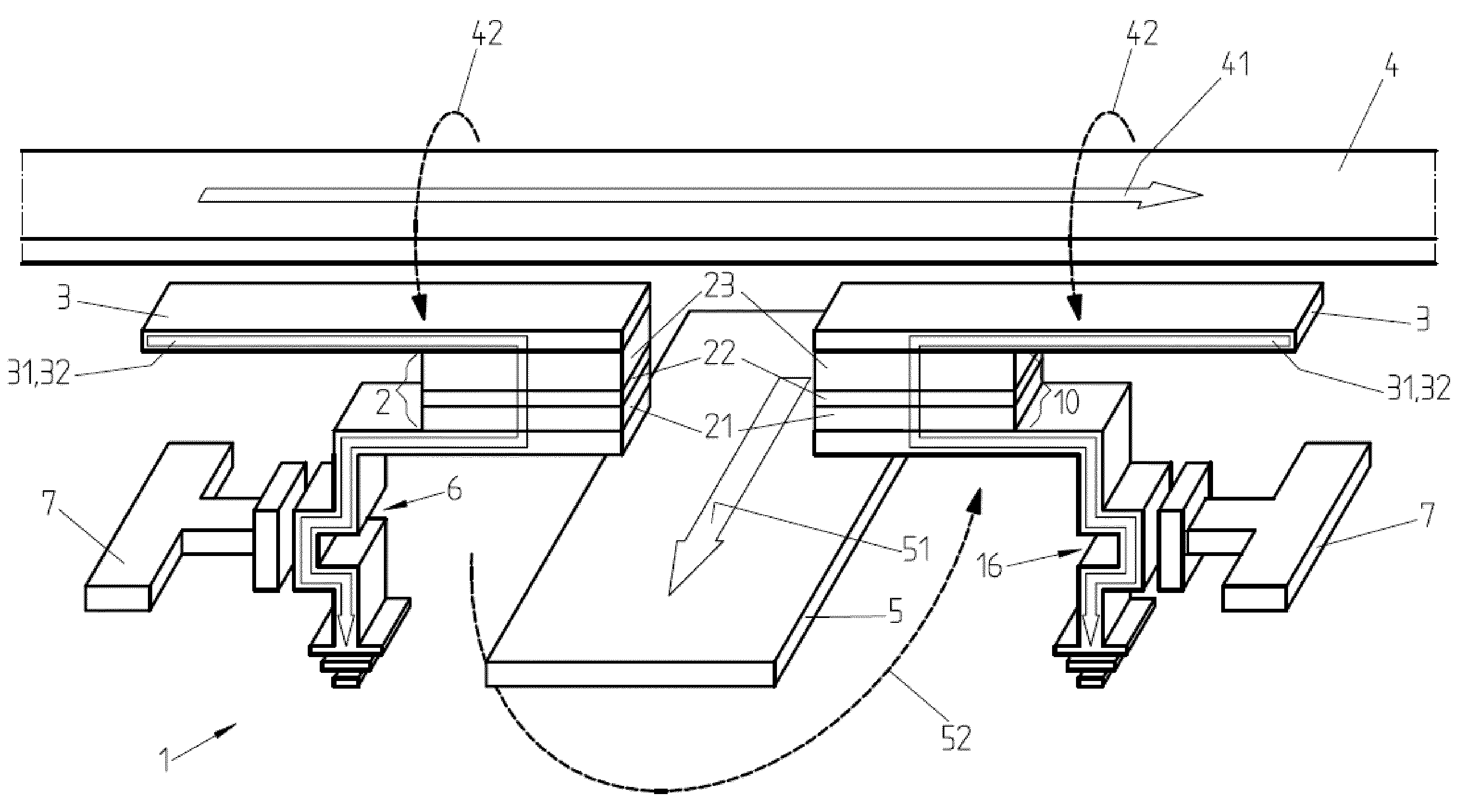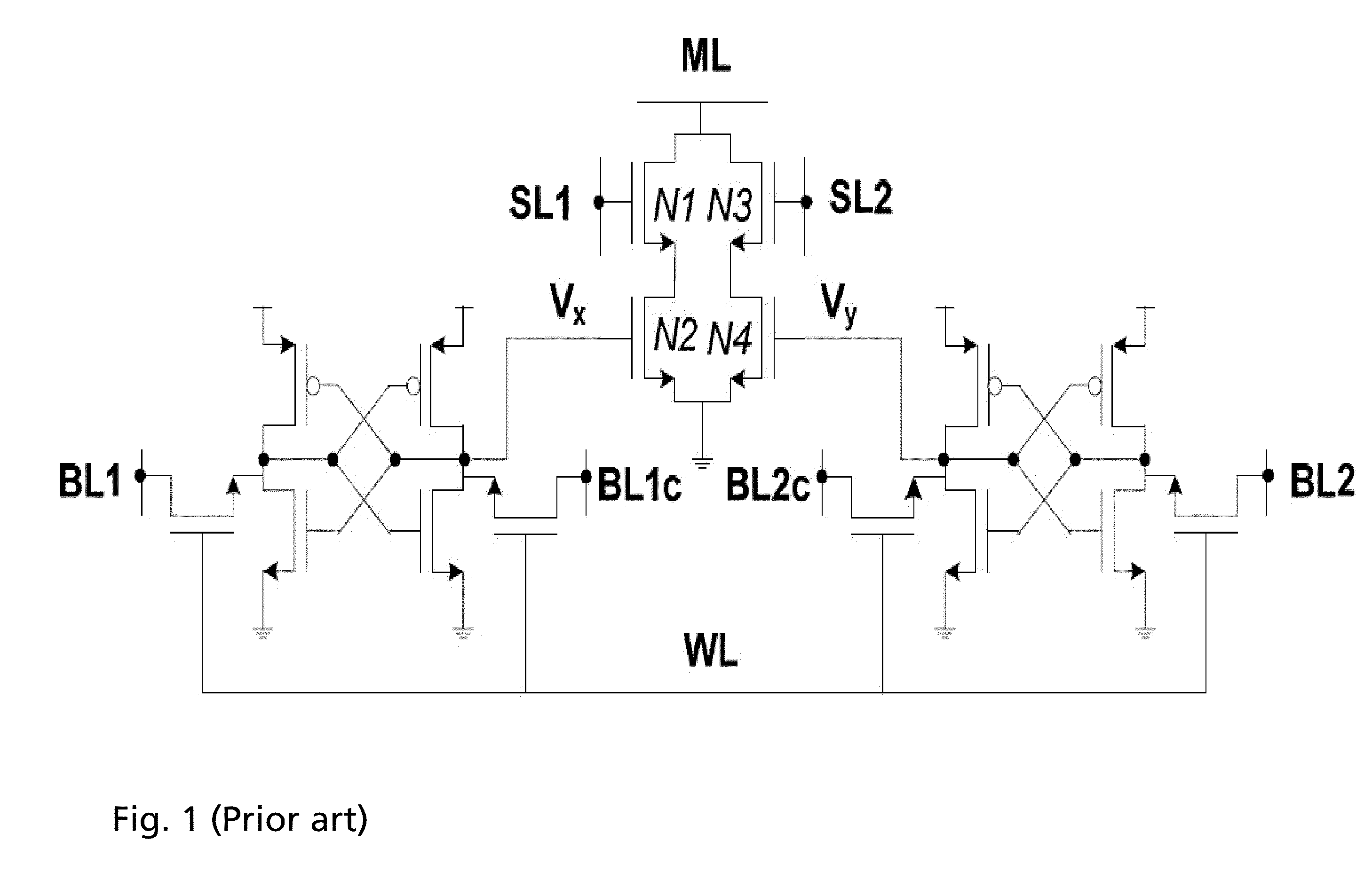Ternary content addressable magnetoresistive random access memory cell
a random access memory and magnetoresistive technology, applied in the field of ternary content addressable random access memory, can solve the problems of circuitry further increasing the physical size affecting the performance of the tcam chip, and the cell can be very large, so as to achieve low-energy higher density and reduce power consumption
- Summary
- Abstract
- Description
- Claims
- Application Information
AI Technical Summary
Benefits of technology
Problems solved by technology
Method used
Image
Examples
Embodiment Construction
[0036]A magnetic random access memory-based ternary content addressable memory (MRAM-based TCAM) cell 1 is shown in FIG. 2 in an embodiment of the invention. The MRAM-based TCAM cell 1 comprises a first magnetic tunnel junction 2, formed from an insulating layer 22 disposed between a storage layer 23 and a sense layer 21. Preferably, the storage layer 23 is made of a hard ferromagnetic material having a magnetization direction, while the sense layer 21 is made of a low coercivity, soft ferromagnetic material and has a magnetization direction that is adjustable relative to said magnetization of the storage layer 23. The ferromagnetic materials include typically iron, cobalt nickel or their alloys. Preferably, the insulating layer 22 is a thin layer, typically in the nanometer range and is formed, for example, from any suitable insulating material, such as alumina or magnesium oxide.
[0037]The first magnetic tunnel junction 2 can comprise any suitable number and / or arrangement of layer...
PUM
 Login to View More
Login to View More Abstract
Description
Claims
Application Information
 Login to View More
Login to View More - R&D
- Intellectual Property
- Life Sciences
- Materials
- Tech Scout
- Unparalleled Data Quality
- Higher Quality Content
- 60% Fewer Hallucinations
Browse by: Latest US Patents, China's latest patents, Technical Efficacy Thesaurus, Application Domain, Technology Topic, Popular Technical Reports.
© 2025 PatSnap. All rights reserved.Legal|Privacy policy|Modern Slavery Act Transparency Statement|Sitemap|About US| Contact US: help@patsnap.com



